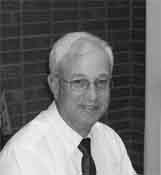 | Mark Kolarik is the President of the Kansas Teachers Community Credit Union, located in Pittsburg, KS, since 10-2002 and is a board member of the Kansas Corporate Credit Union located in Wichita, KS . He has been employed in the financial service industry for the last 31 years, having worked in several credit unions for 21years and 10 years in the banking industry. He holds a Bachelor of Business Administration degree from the University of Wisconsin-LaCrosse and is a Certificated Credit Union Executive. |
Financial
2013-04-29 16:03:01
How can I protect my credit cards from fraud?
A-Plastic card fraud statistics are up, and much of the fraud comes from criminal activities we can’t control. But safe guarding your cards from the risk of exposure, starts with keeping constant control of your cards, card numbers, and any other personal information about your financial information. The following are some good habits to practice:
* Sign your cards with permanent ink as soon as you receive them.
* If your card has a PIN (personal identification number), memorize it. Skip easily recognizable PINs such as the last four digits of your Social Security Number or phone number.
* Do not respond to emails or telephone calls requesting personal information.
* Do not write your PIN on your card or anywhere else.
* Do not lend your card to anyone or leave it unattended and unsecured.
* Carry only cards you’re going to use. Leave all other cards in a safe place at home.
* Watch the merchant perform your card authorization.
* Make sure purchases are recorded properly before signing the receipt.
* Review your card transaction carefully as soon as you receive the statement.
* If you have online access to your statement, review it daily.
*Do not throw receipts or statements in the trash.
* Before traveling, notify your card issuer of the location and time frame to account for changes in your card use.
* Make sure online shopping sites show a closed padlock in the bottom browser window frame, outside the vendor Web site window.
* When using an ATM, shield the screen and keypad with your body to prevent others from seeing your PIN.
* Inspect the ATM to identify any tampering of the machine. Crooks can install devices to capture your information.
When it comes to card safety, if you don’t practice good habits, you will pay. The good news is practicing good habits goes a long way to keeping you and your cards safe. We all need to be responsible and aware of actions that will minimize risk and keep our cards safe.


